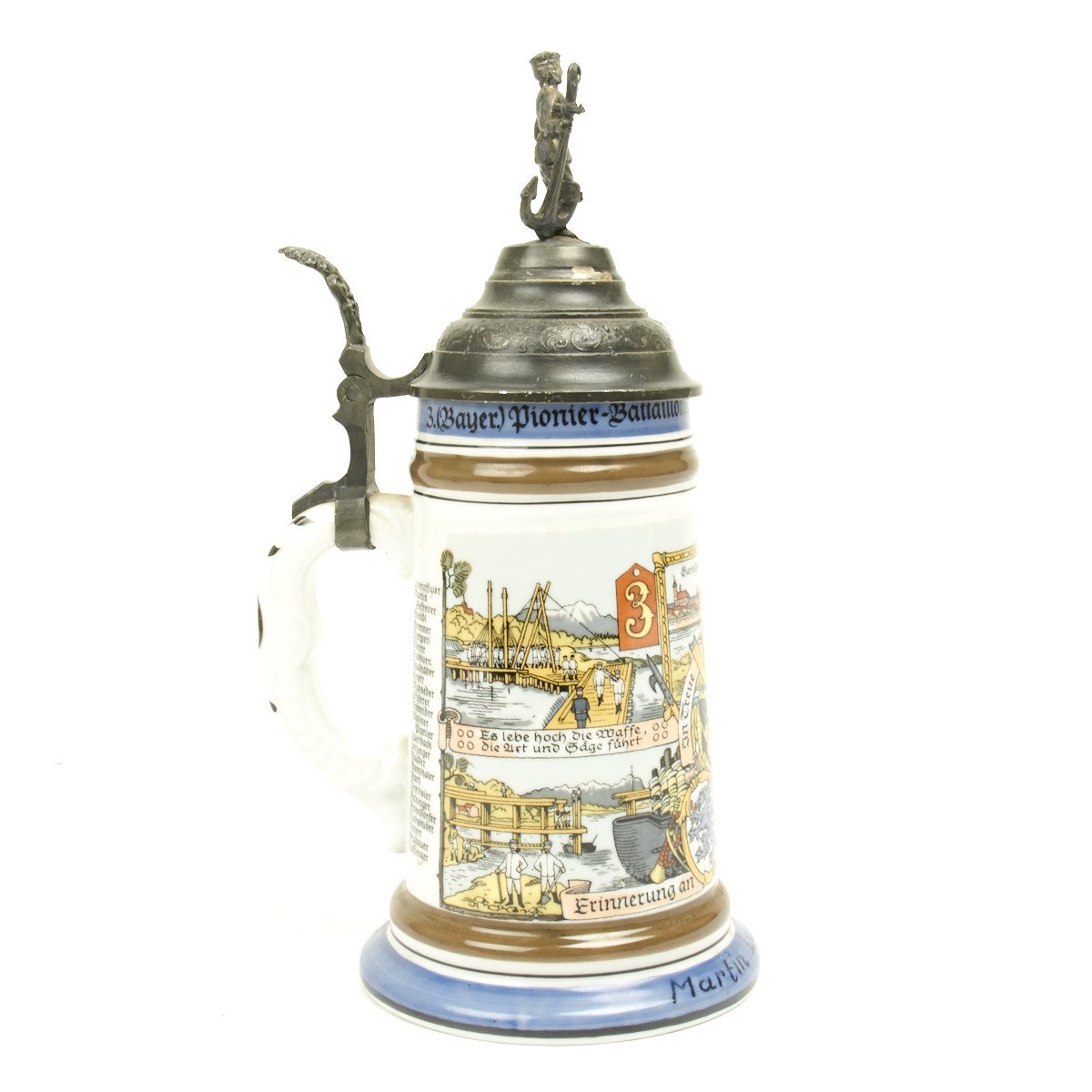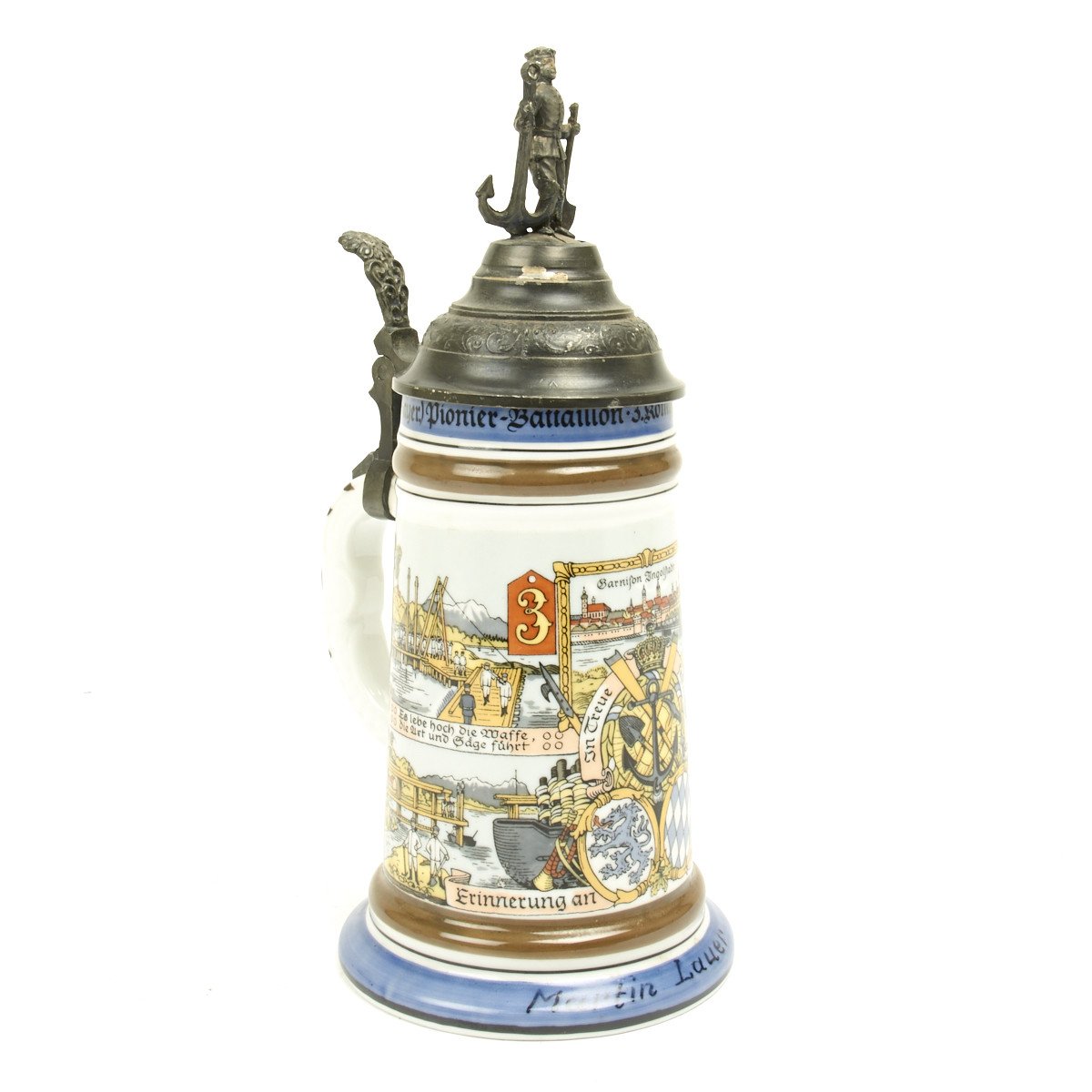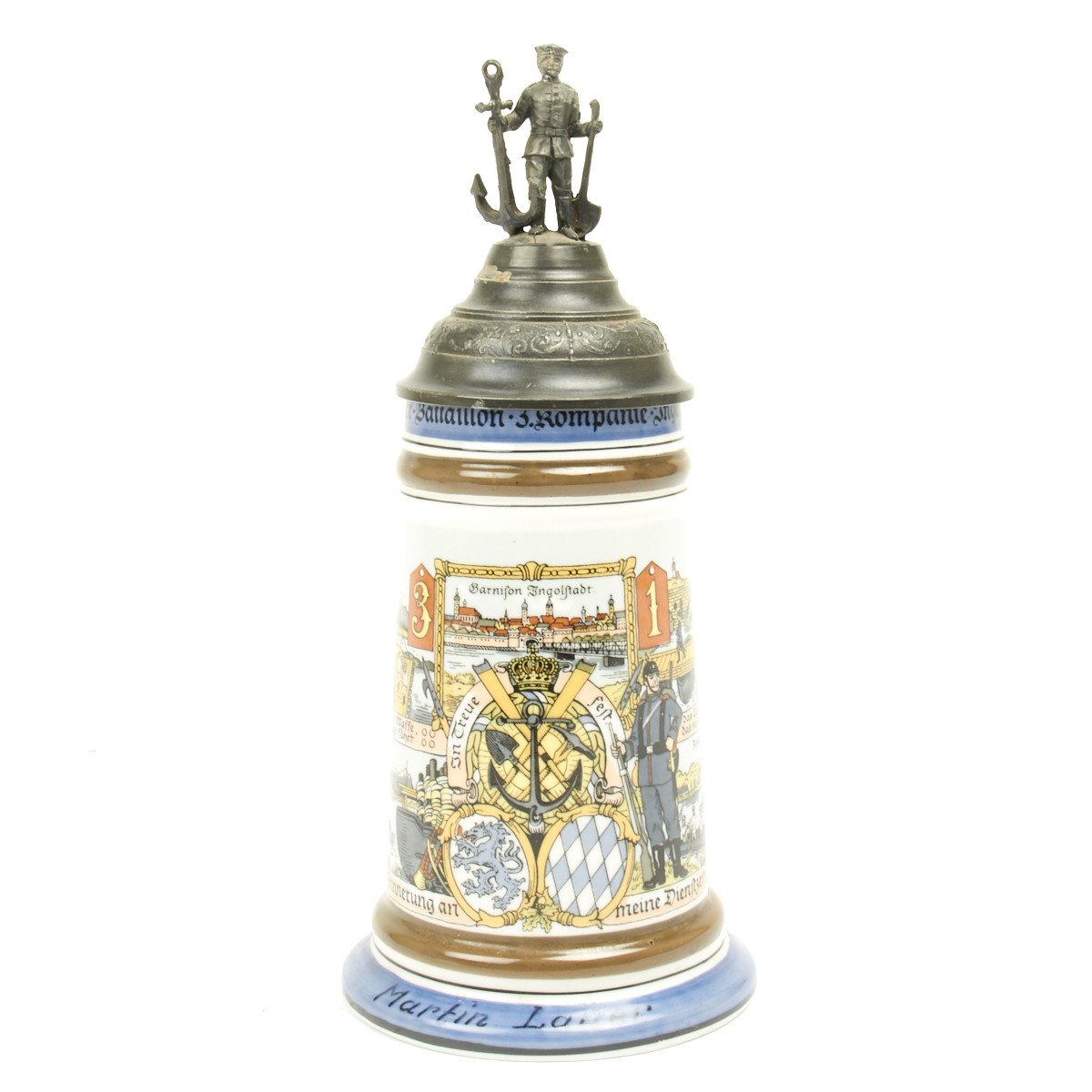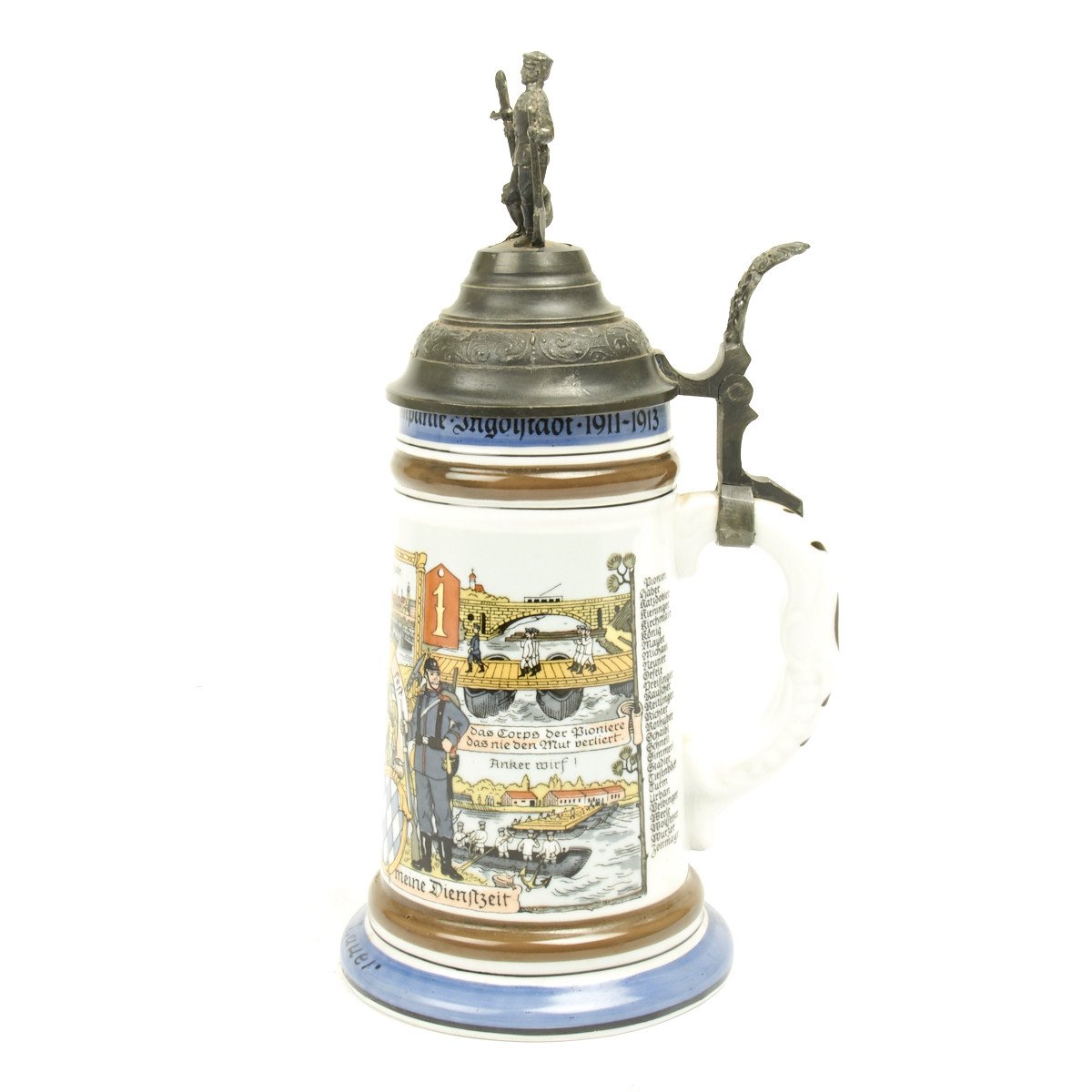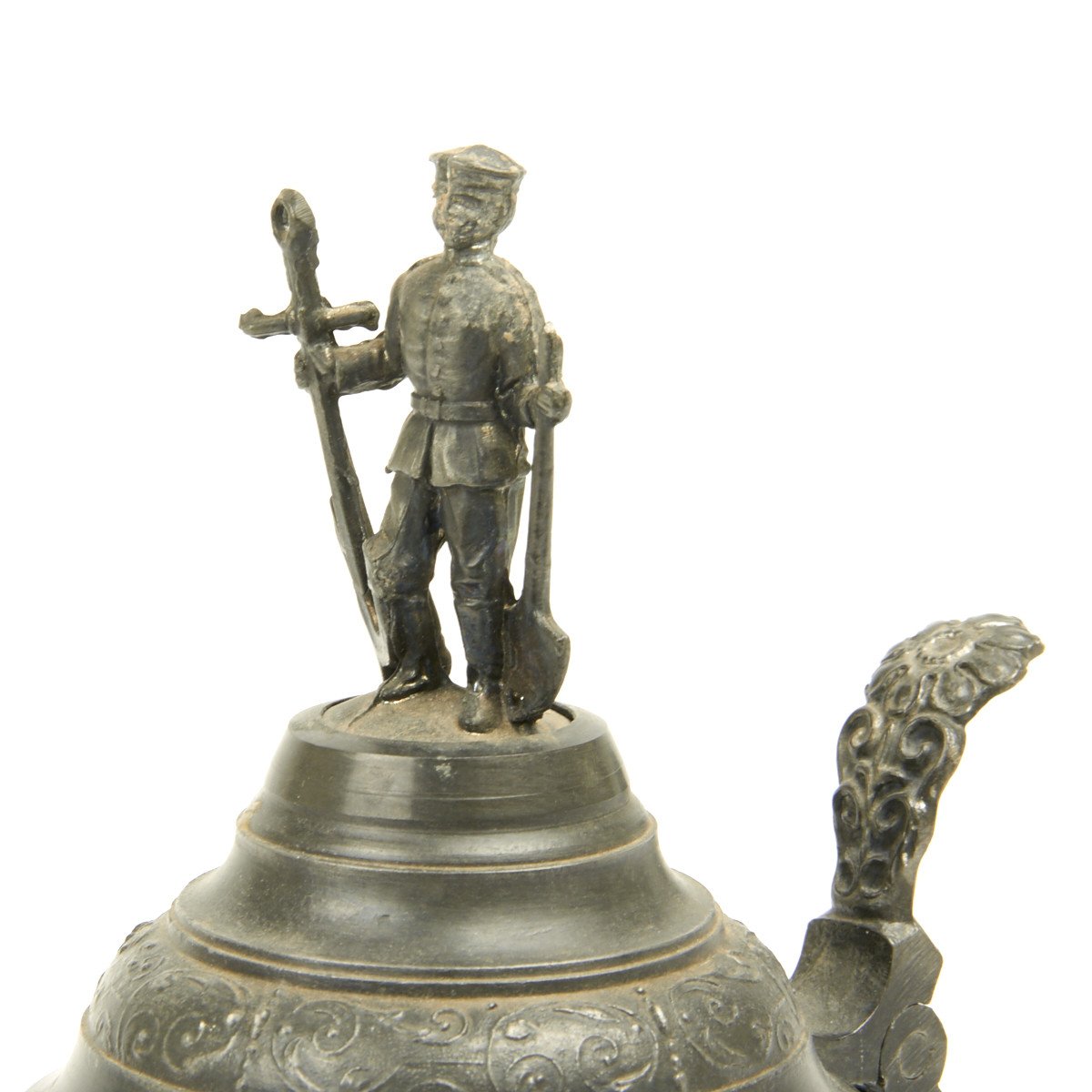Imperial German WWI Reproduction Regimental Beer Stein – Pioneer Battalion Original Items
$ 195,00 $ 78,00
New Made Item: Circa 1970. Perhaps no other collectible is so shrouded in myth, misinformation and mistaken identity as German regimental steins. These pieces have been steadily reproduced since the 1960s and most experts agree reproductions far outnumber authentic examples. Yet few buyers other than stein specialists know how to identify the fakes.
The majority of authentic German regimental beer steins were produced between about 1890 and 1914. During this time, military service was compulsory in Germany. Most men would take basic training between 17 and 20 and then enter the reserves until age 40. A group of men would enter a unit together, stay in the same unit for training and be discharged as a unit. This sense of togetherness fostered the custom of buying souvenirs with the unit name, insignias and decorations as a keepsake of military service. Many souvenir items were available such as pipes, clocks, flasks and especially steins. Rosters of names from your unit, or regiment, could be added to the steins and these became known to collectors as “regimental steins.”
Authentic ca. 1890-1914 steins were available in pottery, porcelain, glass and metal. Regardless of what the stein was made of, almost all had pewter lids. The most common sizes are half-liter and one-liter. The beginning of WW I effectively ended the production of regimental steins as labor and materials were diverted to the war.
This is a very high quality reproduction beer stein from the 1970s. It features a lithophane of a nude woman. You look inside the stein while holding the base up to a light. Many original porcelain steins and almost all reproduction porcelain steins have a lithophane in the base. Also a pewter lid with a sailor holding an anchor and a shovel.
It reads around the top the stein:
(Bayer.) Pionier-Battaillon – 3. Kompanie – IngolStadt – 1911-1913
The base is named to Martin Lauer and the names of the other men in battalion are listed as well.
While it is a reproduction it is of very high quality and is a very nice looking piece to add to an Imperial German collection at the fraction of the cost of a genuine stein.
Prompt Shipping and Professional Packaging
We provide a variety of shipping options due to our long-running partnerships with UPS, FedEx and DHL. Our warehouse personnel are well trained and will pack the goods according to our exact and precise specifications. Before shipping your items will be thoroughly inspected and secured. Every day, we deliver to thousands of customers in different countries. This is a sign of our determination to become the largest online retailer worldwide. Both Europe as well as the USA have warehouses and distribution centers.
Note that orders containing more than one item will be subject to a processing period that is based to the particular item.
Prior to shipping the items, our staff will carry out an exhaustive inspection of the products you ordered. Today, most orders will be delivered within 48 hours. The estimated delivery time is between 3-7 days.
Returns
The stock is constantly changing. It's not entirely managed by us since we are involved with multiple entities, including the factory and our storage. Therefore, the actual inventory could alter at any time. It is possible that you will not receive your order after the order has been made.
The period of time is 30 days. Unfortunately, if 30 days have passed since you purchased your product, we are unable to provide a refund or exchange.
The item must not be in use and must be in the original packaging. The item must be in the original packaging.
Related products
Uncategorized
Angolan Rebel 1970s era 60mm Inert Display Mortar from Angolan Civil War Original Items
Uncategorized
Uncategorized
Uncategorized
Uncategorized
Uncategorized
Armored Burgonet Helmet & Polearm from Scottish Castle Leith Hall Circa 1700 Original Items
Uncategorized
Uncategorized
Uncategorized
Uncategorized
Uncategorized
Uncategorized
Uncategorized
Uncategorized
Armoured Fighting Vehicles of the World: AFVs of World War One (Hardcover Book) New Made Items
Uncategorized
